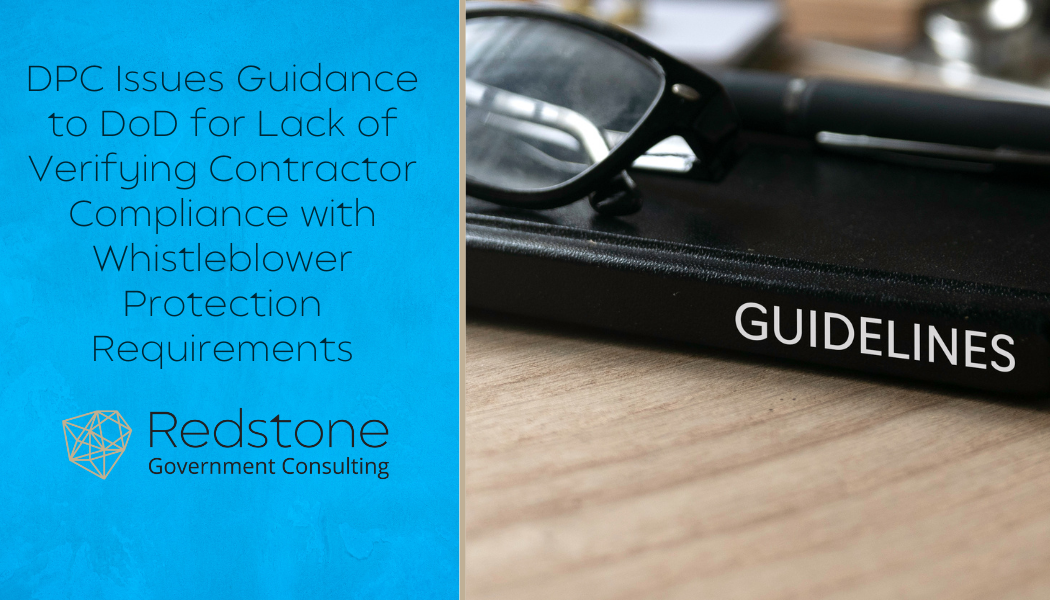Cost Accounting Standard (CAS) 409 provides the criteria for assigning costs (i.e., depreciation) of tangible capital assets to cost accounting periods and allocating those costs to contracts in an objective and consistent manner.
Topics: Compliant Accounting Infrastructure, Proposal Cost Volume Development & Pricing, DFARS Business Systems, Government Regulations, Cost Accounting Standards (CAS), Federal Acquisition Regulation (FAR)
There is no such thing as a risk-free interaction with the Government when it comes to submitting data.
Topics: Proposal Cost Volume Development & Pricing, Contractor Purchasing System Review (CPSR), Government Regulations, Federal Acquisition Regulation (FAR), Estimating System Compliance
CAS 404 provides the criteria for determining whether to assign the cost of a capital asset as a period expense when acquired or capitalize the item as a tangible asset and spread the cost over two or more accounting periods.
Topics: Proposal Cost Volume Development & Pricing, DFARS Business Systems, Government Regulations, Cost Accounting Standards (CAS), Federal Acquisition Regulation (FAR)
Besides the potential tax benefits of an Employee Stock Ownership Plan (ESOP), the National Defense Authorization Act (NDAA) for Fiscal Years 2022 and 2024 has introduced an additional benefit for employee-owned businesses contracting with the Department of Defense (DoD). A pilot program that will allow for the award of follow-on contracts without competition.
Topics: Compliant Accounting Infrastructure, Employee & Contractor Compensation, Contracts & Subcontracts Administration, Government Regulations, Federal Acquisition Regulation (FAR)
Contract Requirements and Expectations for Training
Topics: Compliant Accounting Infrastructure, Small Business Compliance, Contracts & Subcontracts Administration, Government Compliance Training, DCAA Audit Support, Human Resources, Federal Acquisition Regulation (FAR), Organizational Change Management Consulting
If you want to provide cloud-based services to Federal Agencies, you will need to get your service approved through the Federal Risk and Authorization Management Program (FedRAMP) managed by the FedRAMP Program Management Office.
Topics: Compliant Accounting Infrastructure, DCAA Audit Support, Government Regulations, Cost Accounting Standards (CAS), Federal Acquisition Regulation (FAR)
The Office of the Under Secretary of Defense, Defense Pricing and Contracting (DPC) issued a guidance memorandum dated March 18, 2024 to Agencies based on the results of the Department of Defense (DoD) Inspector General (IG) Audit of DoD Compliance on Whistleblower Protection Requirements. While the DoD IG found in most cases, that Contracting Officers included the DFARS 252.203-7002 Requirement to Inform Employees of Whistleblower Rights clause in contracts, they did not verify whether contractors were complying with the clause.
Topics: Contracts & Subcontracts Administration, Government Compliance Training, DFARS Business Systems, DCAA Audit Support, Human Resources, Government Regulations, Federal Acquisition Regulation (FAR)
Have you ever thought about the different government contract types and how it impacts your company’s bottom line: profit? Does it really matter what type of government contract that you have? Do you know what oversight there may be required of a particular contract type? Knowing and preparing for each type of contract, prior to accepting any government contract, will directly impact your administrative cost and profitability as well as the amount of government oversight. In this article, I will discuss the contract types and how significantly different they are, and your risk associated with these contract types.
Topics: Small Business Compliance, Contracts & Subcontracts Administration, DCAA Audit Support, Government Regulations, Federal Acquisition Regulation (FAR)
In November of 2023, DoD issued a final rule amending the Defense Federal Acquisition Regulation Supplement (DFARS) to partially implement a section of the 2017 National Defense Authorization Act (NDAA) addressing the Federal Acquisition Regulations (FAR) and DFARS contract clauses impacting prime or higher-tier contractors issuing commercial subcontracts for commercial products, including commercially available off-the-shelf items, and commercial services.
Topics: Contracts & Subcontracts Administration, Government Regulations, Federal Acquisition Regulation (FAR), Service Contract Act, Commercial Item Determination
Government regulations can be complex and perhaps even confusing. For those of you experienced in Government contracts and even contract audits, you have heard of the Federal Acquisition Regulation or FAR and, FAR Part 31, Contract Cost Principles and Procedures. The scope of this part describes the applicability of the cost principles and procedures in pricing and accounting for costs on contracts, subcontracts, and modifications whenever cost analysis is needed. There is a lot there, but what’s really important? Well, I will not try to duplicate what can be at least a day course within this blog, but I will highlight three areas that are really important.
Topics: Compliant Accounting Infrastructure, Contracts & Subcontracts Administration, DCAA Audit Support, Government Regulations, Federal Acquisition Regulation (FAR)










